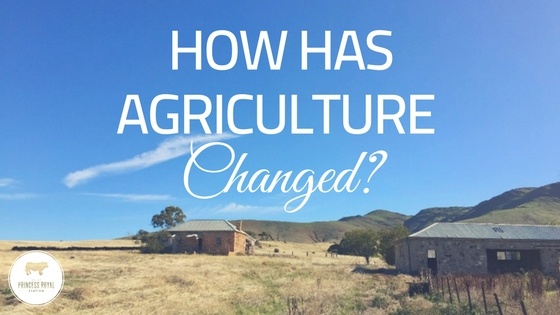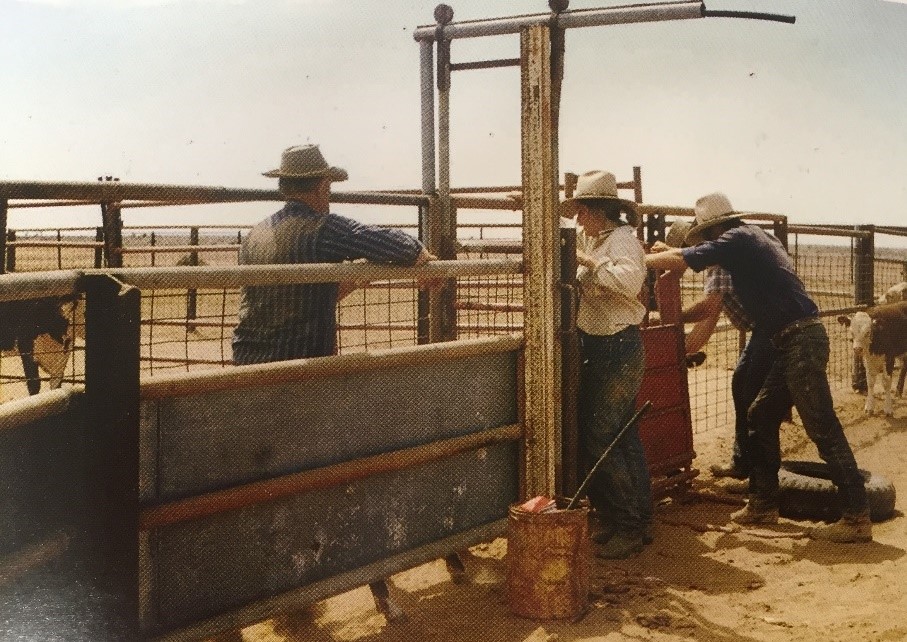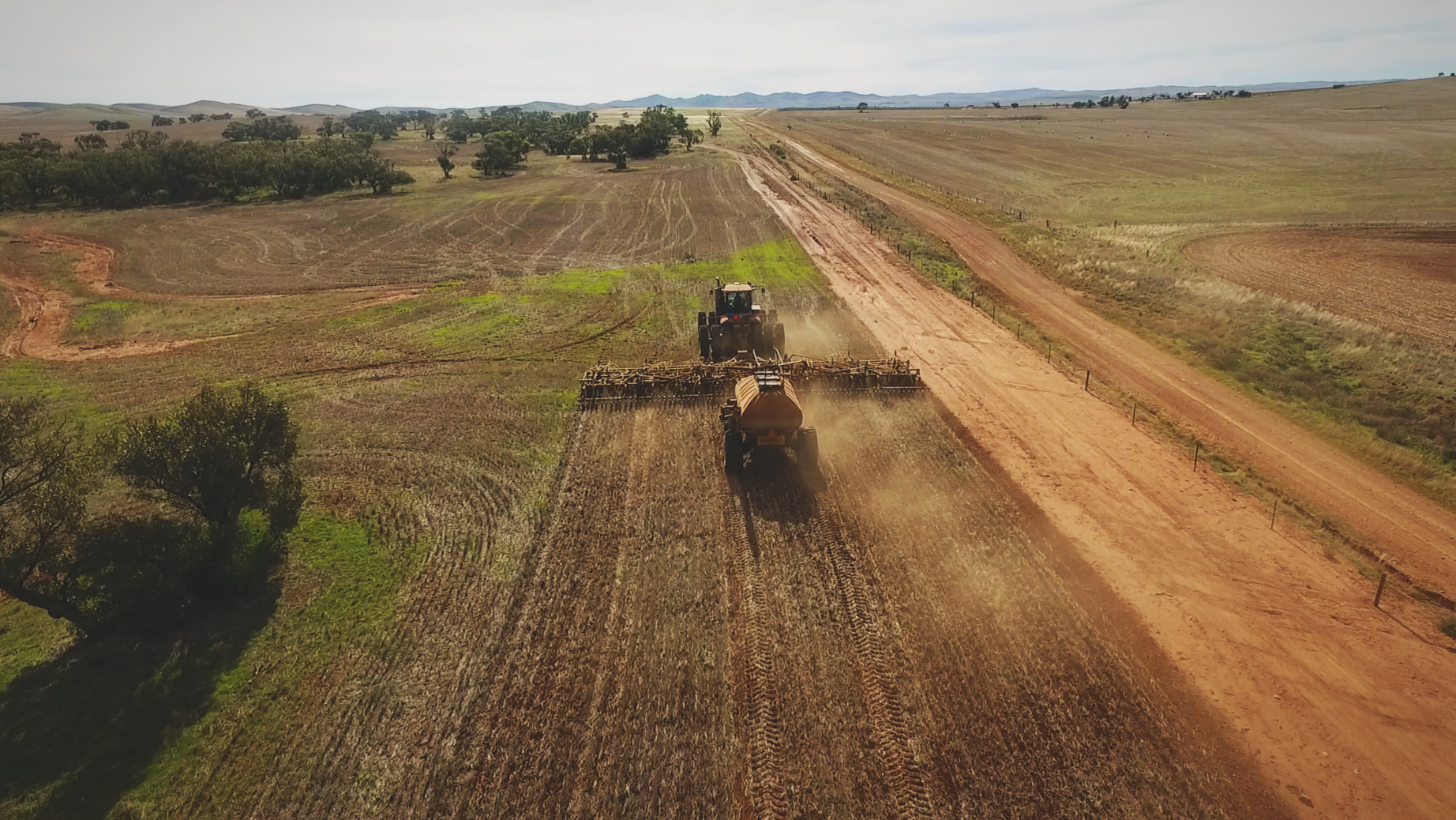
Australian farms have come a long way in Australian agricultures very short history.
The ABS published that there were 85,681 farms in Australia with a gross value of production of $60.8 billion in 2016-17 (ABS, 2017) These figures are made even more impressive by the fact that our Aussie farmers are so good at what they do that they can not only provide for the Australian population but export a significant amount to other countries, further supporting the Australian economy.
Farming in Australia has evolved in just 250 years to what it has become today. In January 1788, Australia’s livestock industry consisted of just 7 horses, 7 cattle, 29 sheep, 74 pigs, 5 rabbits, 18 turkeys, 29 geese, 35 ducks and 209 fowls (Year Book Australia, 2001, 1301.0).
Today there are more cattle than people and over 27 million sheep! (MSA, 2018)
In 1787 starting in NSW, liberated prisoners were granted land assist in the colonisation of Australia An unmarried man was granted 30 acres or less, 20 more if he were married and a further 10 acres for every one of his living children at the time of making the grant. This land was to be tax, rents, fees and acknowledgements free for 10 years.(Year Book Australia, 2001, 1301.0)
Similar grants were extended to free migrants and marines in 1789 and by 1860 1.2 million acres were under crop and contributing to Australian agriculture. Also in 1860, Australia’s livestock industry now consisted of 0ver 430,000 horses, nearly 4 million cattle, over 20 million sheep and over 350,000 pigs. (Year Book Australia, 2001, 1301.0)
European settlers brought with them their farming traditions, which were a huge success in some regards and a massive failure in other areas. Farmers were forced to contend with Australia’s harsh climate and conditions such as the drought that crippled South Australian pastoralists and producers in 1864 until 1866. (Radcliffe. J, SA History Hub, 2015)
Working dogs were adapted to the Australian conditions, such as the iconic Australian Kelpie and Australian Shepard.
Farms in the past had enough workmen, their wives and children to support small towns. Remnants remain around our town of Burra, South Australia, of schools, post offices and churches that the farm's families would attend.
Slowly, however, the need to employ so many labourers became unnecessary with the introduction of rail, heavy machinery and technology. No longer were horses or bullocks and carts necessary to make a weeks-long journey into the city and do the brunt of the labouring. Livestock weren’t required to plough through fields, sickles or reaping hooks were replaced by machinery. Tractors trains and trucks replaced bullock teams for heavy work and transport.
Grain and crop harvesting became easier and more efficient. Farms grew rapidly as a result fewer labourers were required to work the same amount of land. Grain storage and processing was also evolving with the introduction of field bins silos allowed farmers to store grain on farm for future use feeding livestock or for the next season's crop. The first bulk concrete silos were constructed in Western Australia 1937 at a cost of £60,000 and then in every state thereafter. (InHerit State Heritage, WA)
According to Primary Industries and Regions SA, bulk silos were constructed to combat the effects of rodent infestation on bags of grain at train stations, ports and storage depots. Concrete silos were then constructed in most major towns to support the towns nearby farmers. (PIRSA, 2017)

Refrigeration made an impressive influence on the Australian agriculture scene in the nineteenth century. Before it, perishable produce would be stored in cool rooms or iceboxes, and meat was preserved or canned. Most farms had their own vegetable gardens, fruit trees, dairy cows and slaughterhouses to sustain the farm.
Primary Industries and Regions SA writes that first came imported ice, next mechanical ice machines. Mechanical refrigeration developed slowly, and the first shipment of frozen meat was exported from Port Adelaide in South Australia to Britain in 1895. The first commercially available fridge hit the market in America in 1918 and was more expensive than a car and even more expensive to import into Australia. (PIRSA, 2017)
With the development of technology and farming practices came increasingly more educated farmers. The 2006 census revealed that “almost one-third (31%) of those employed in the agricultural industry had achieved post-secondary education levels, predominantly certificate, diploma or bachelor degree levels.” (ABS, 2006)

Farms today are more efficient than ever, with technology on the forefront of the industry. Improvements in productivity, biosecurity and environmental sustainability have allowed the Aussie farmer to compete and stand-out on the world's stage. Productivity and environmental sustainability are on the rise as producers tackle the ever-lingering issue of climate change and population growth.
Education is a strong focus within the industry as the next generation of Australian farmers is enticed into agricultural fields.
In just 250 years the humble Australian farmer has contributed significantly to Australia’s growth and success as a producing nation. Our Australian farmers work hard year-round to feed and clothe the nation and, in our opinion, should be celebrated every day.
Check out some of our other articles on our blog page to learn more about Australian farms, technology in agriculture, why we have to do more with less and many more.

